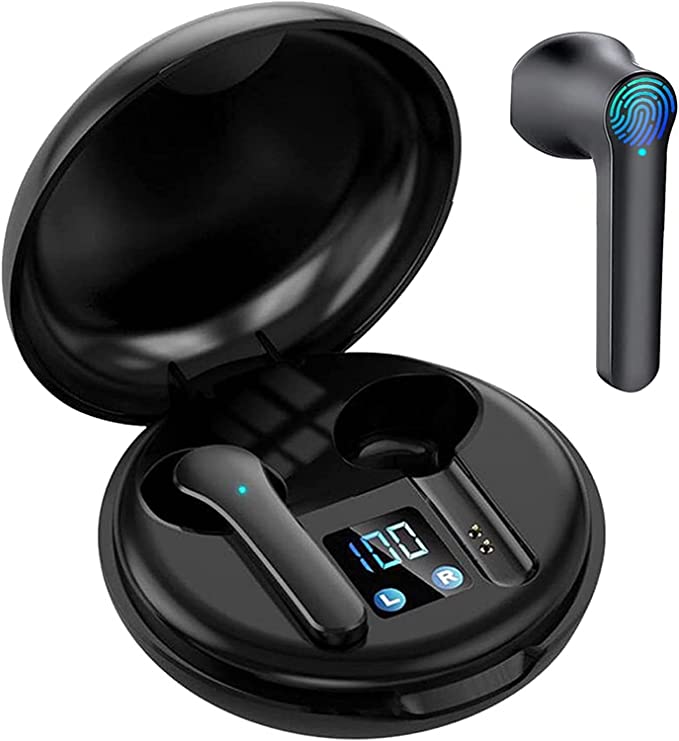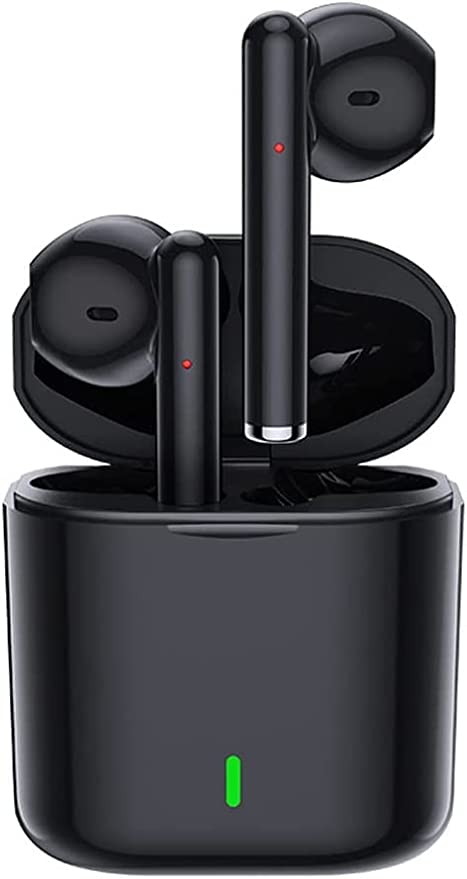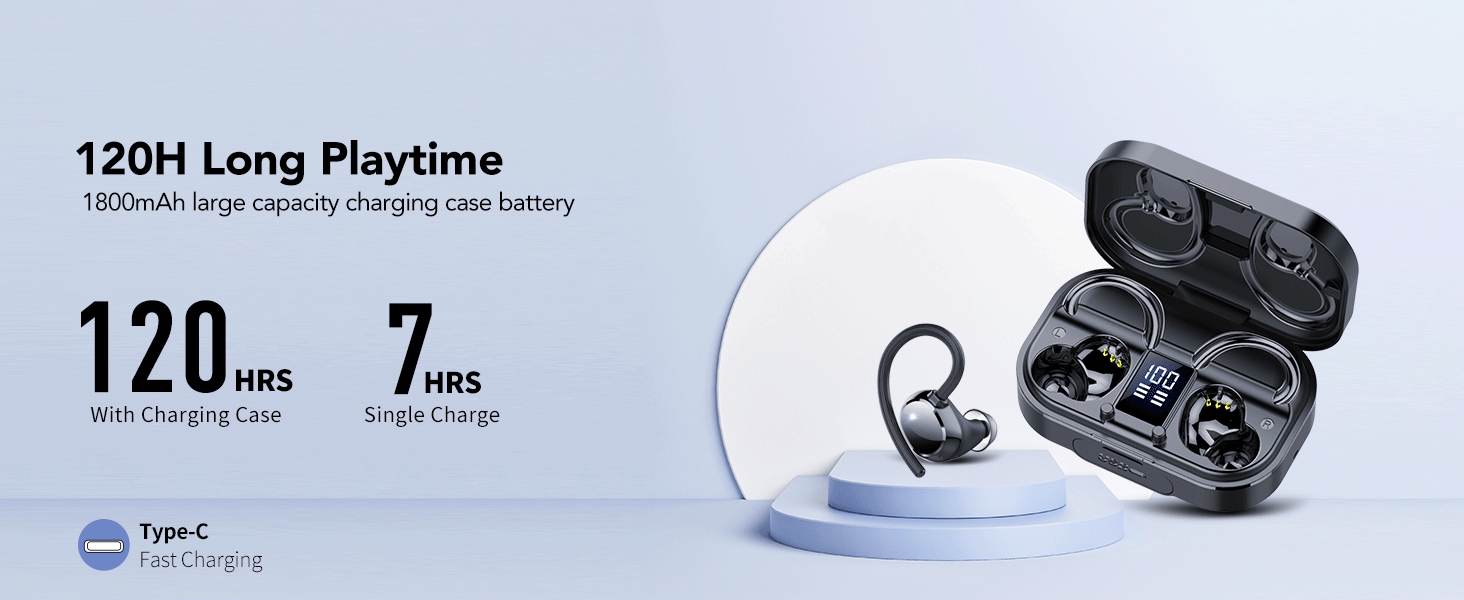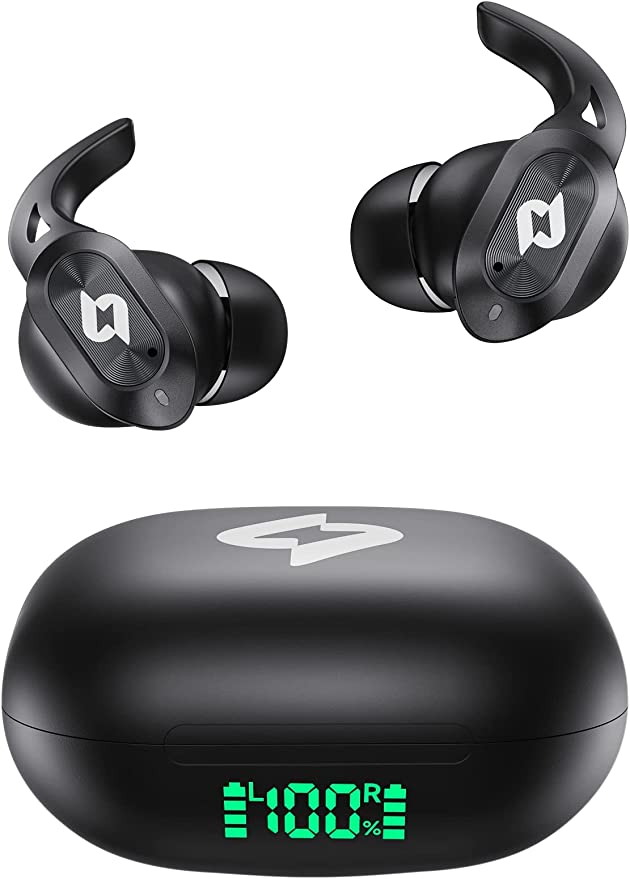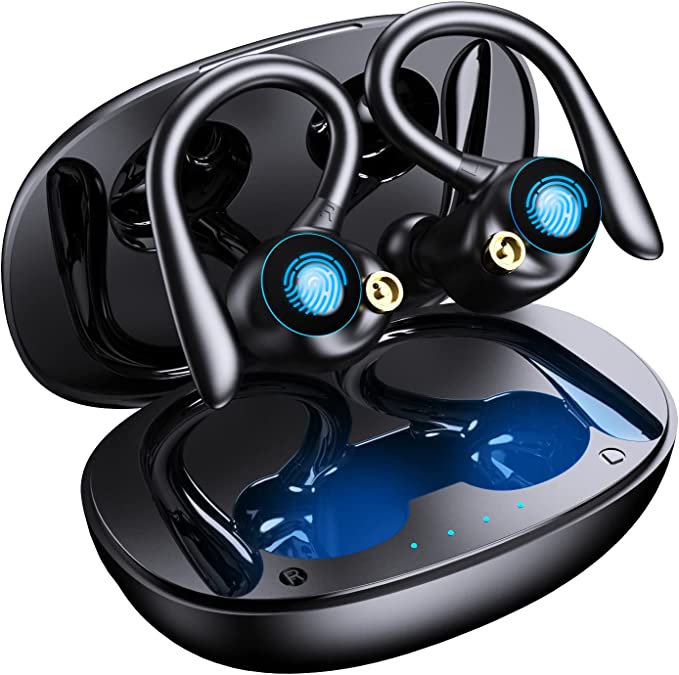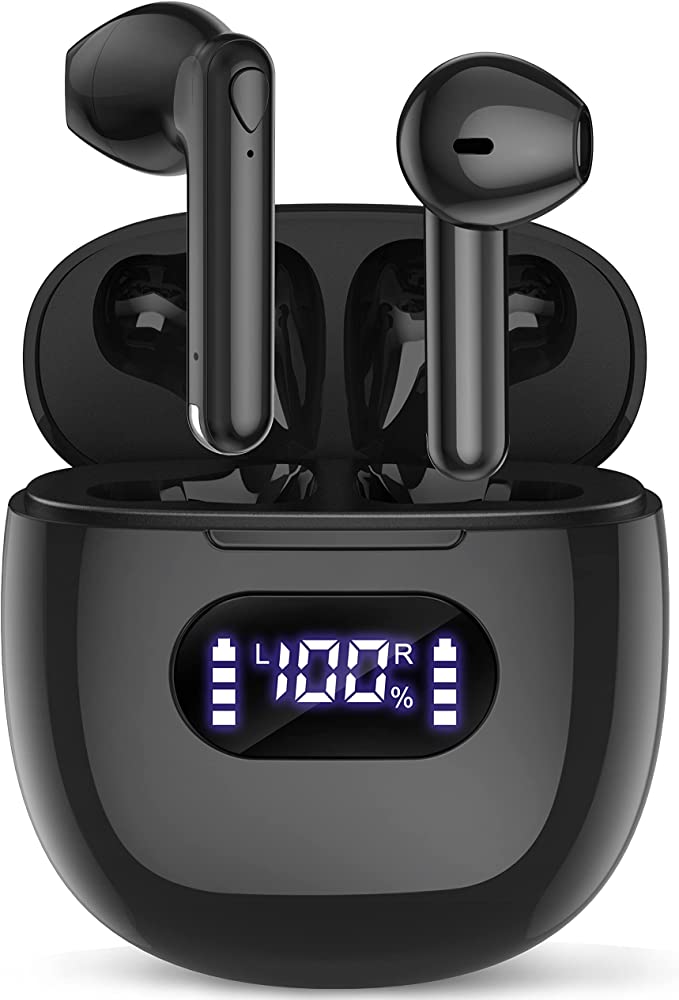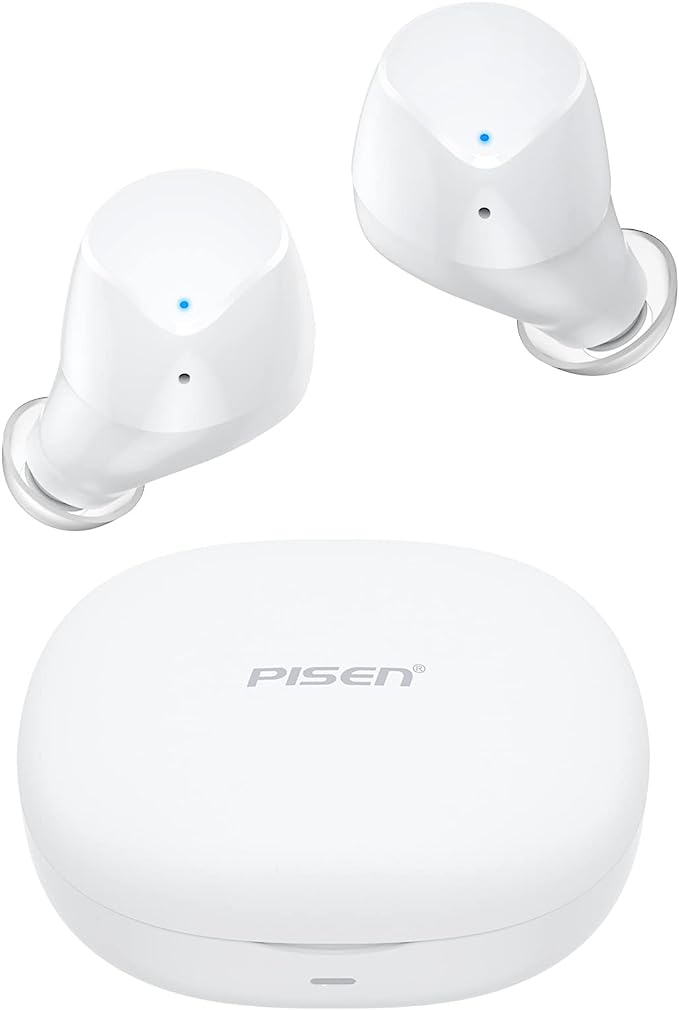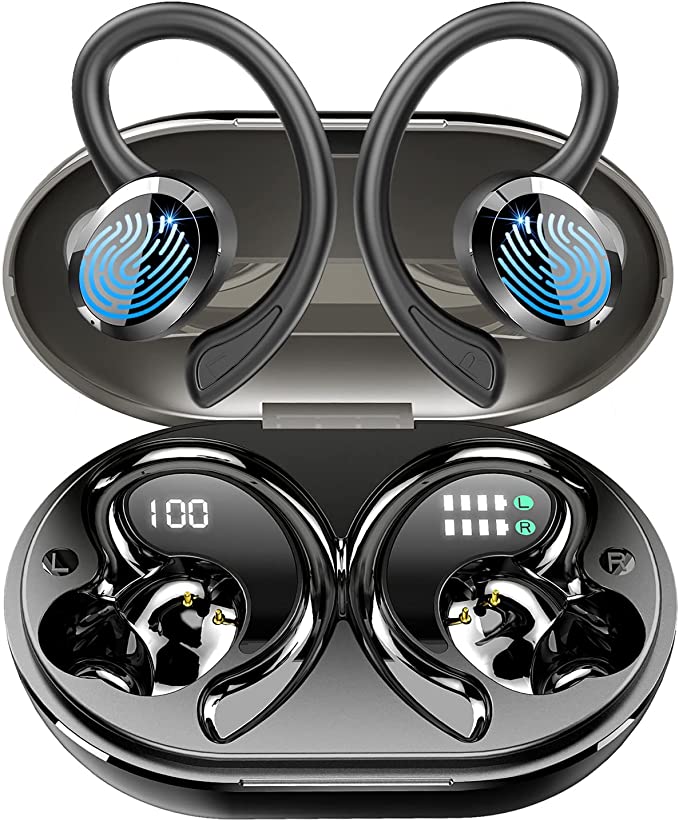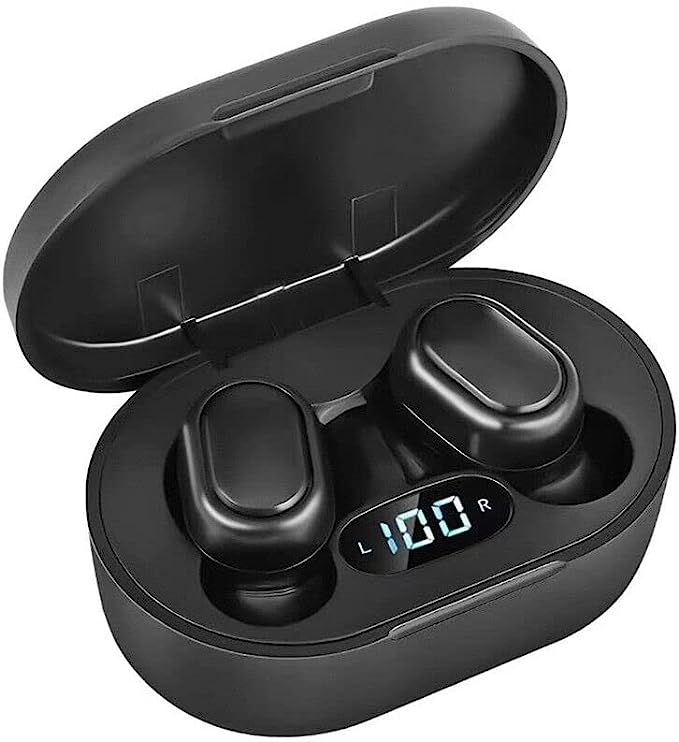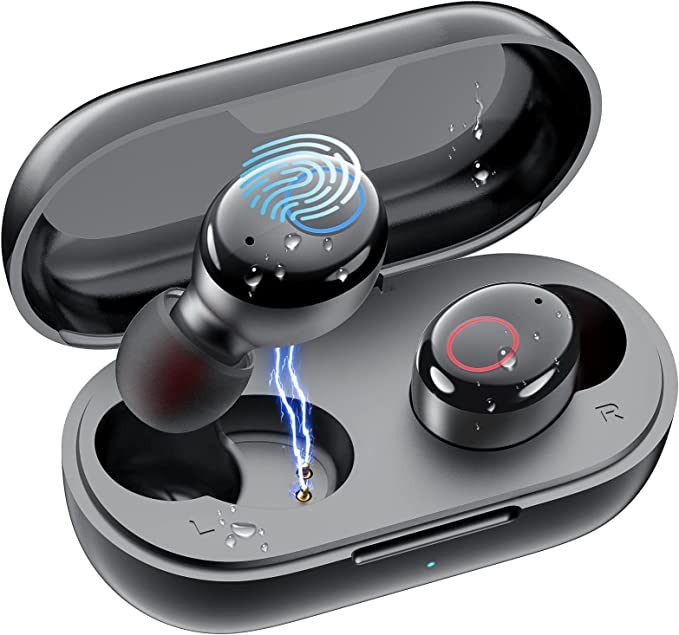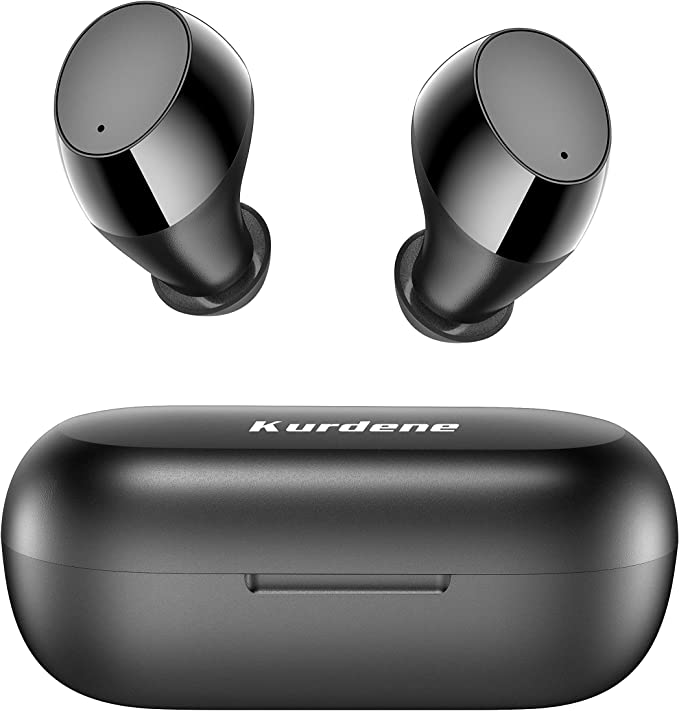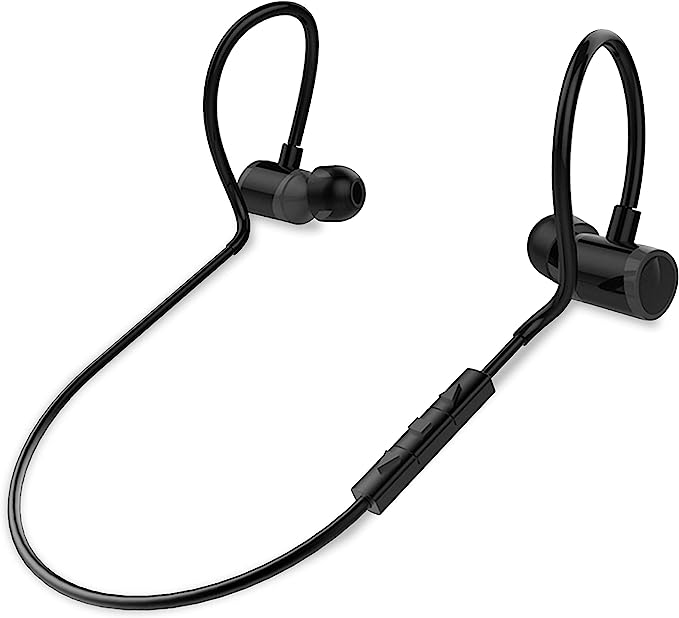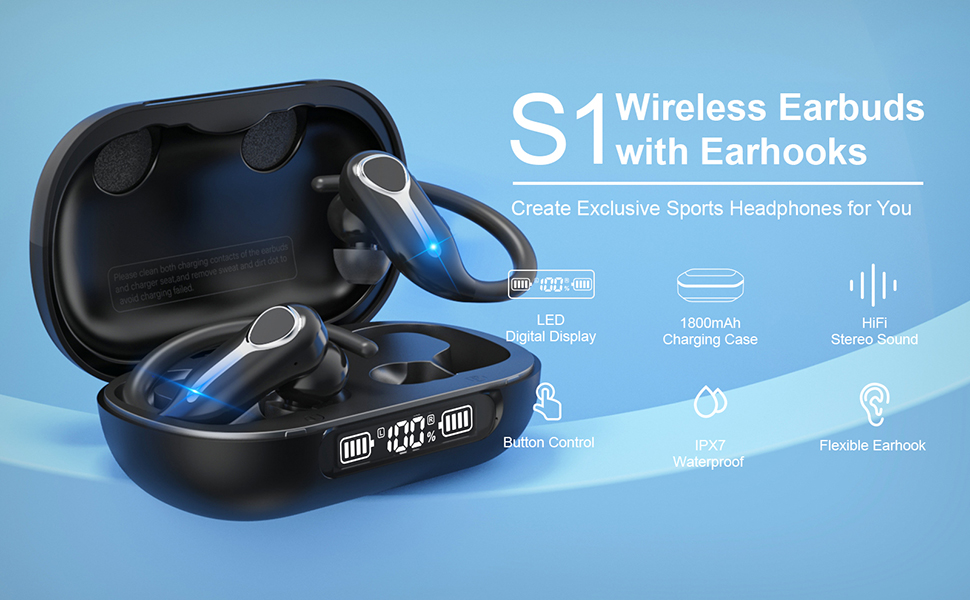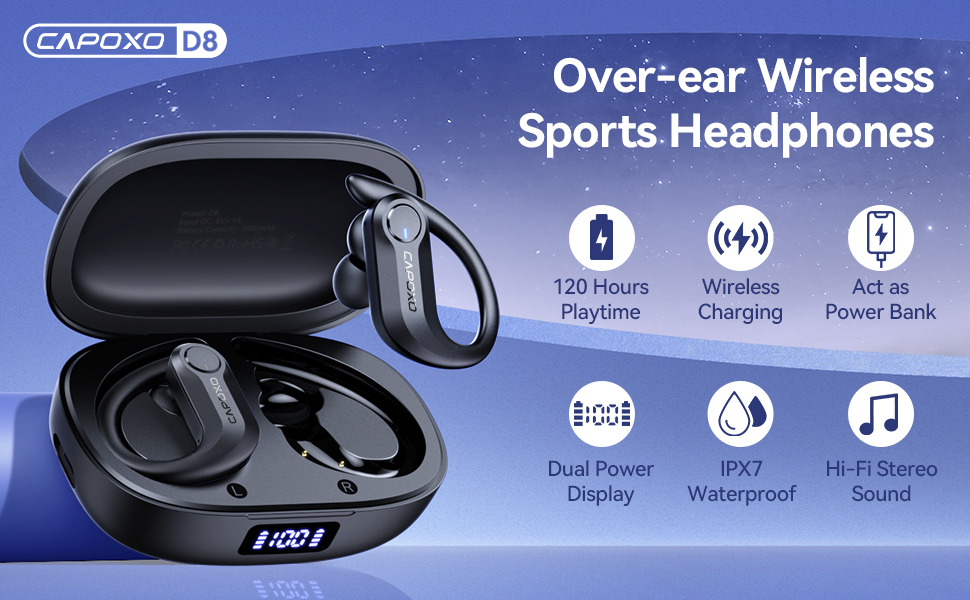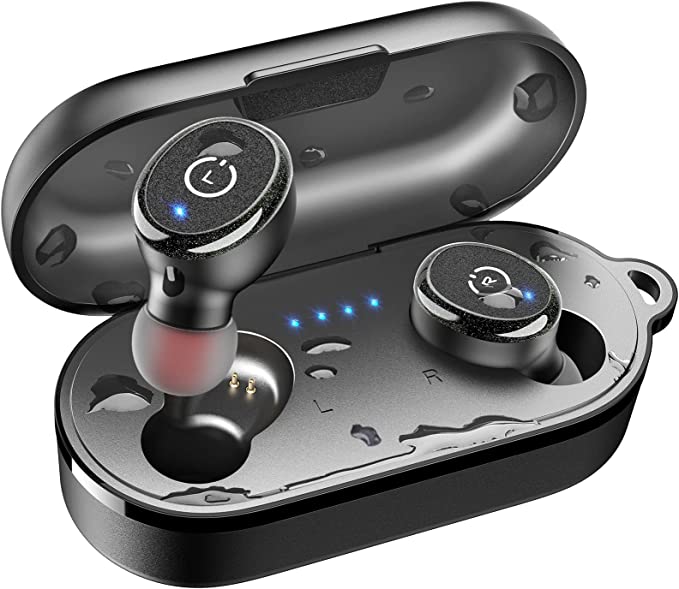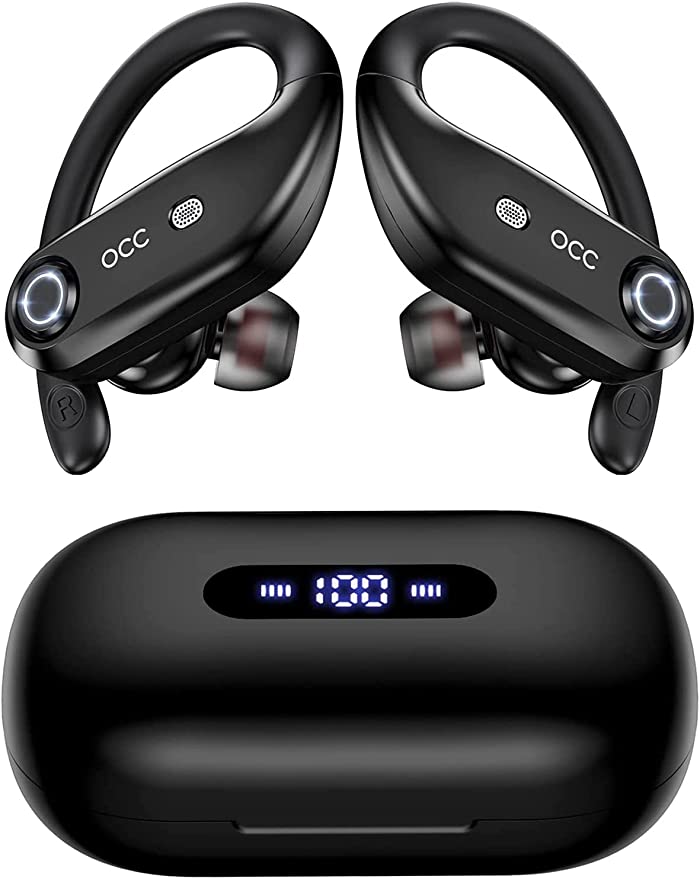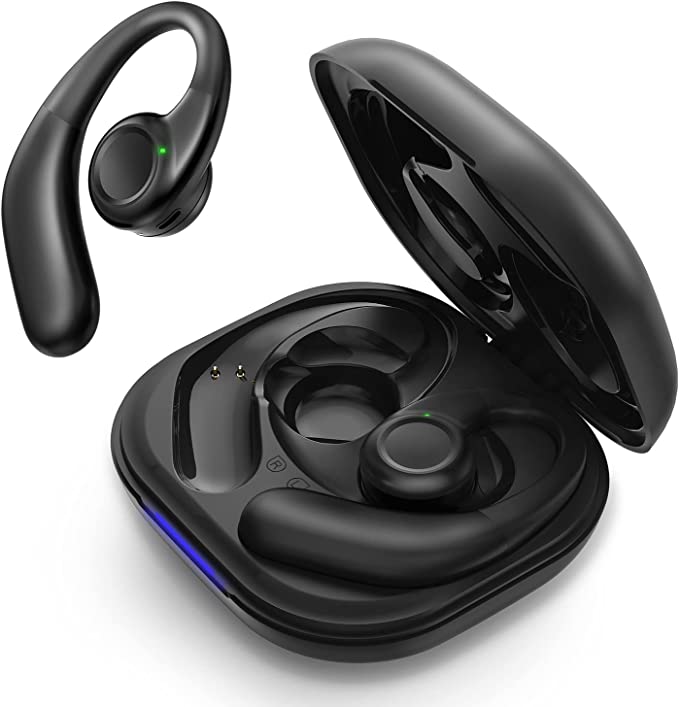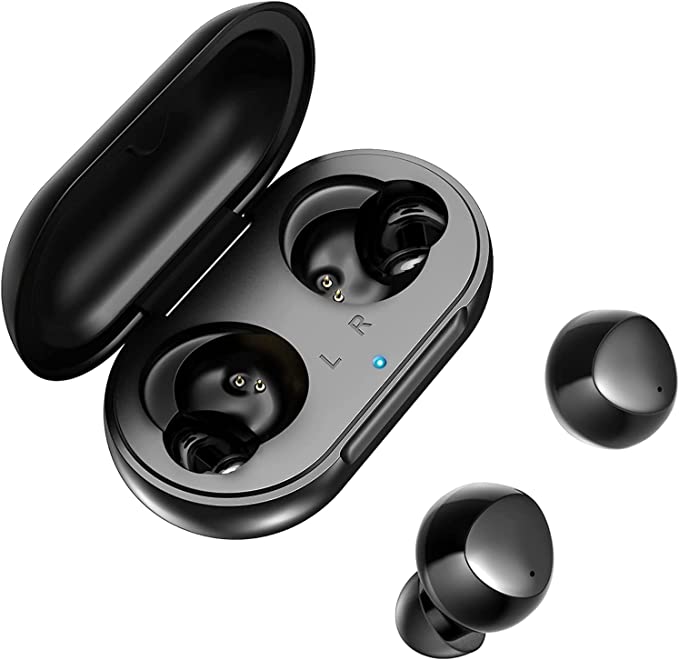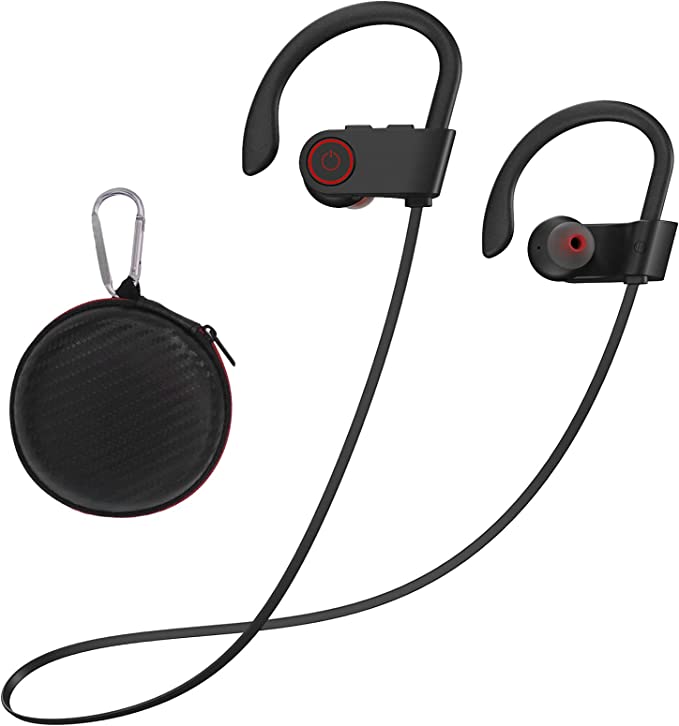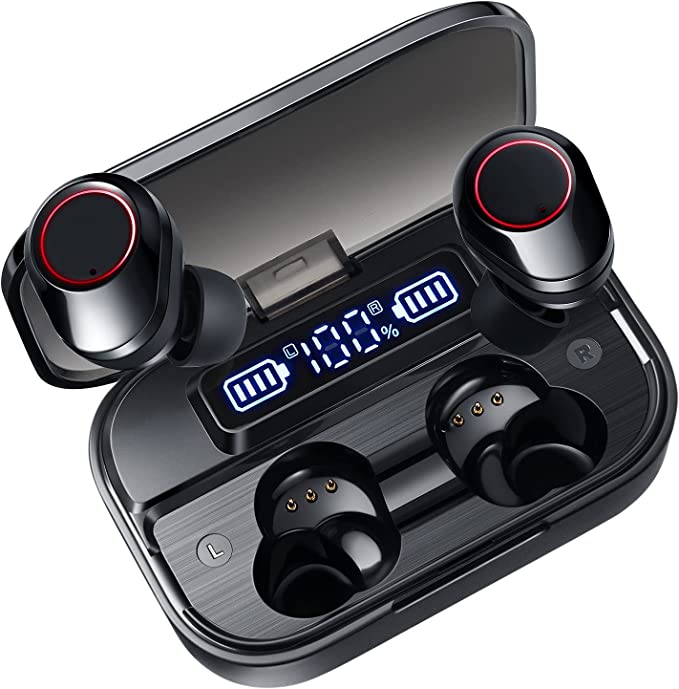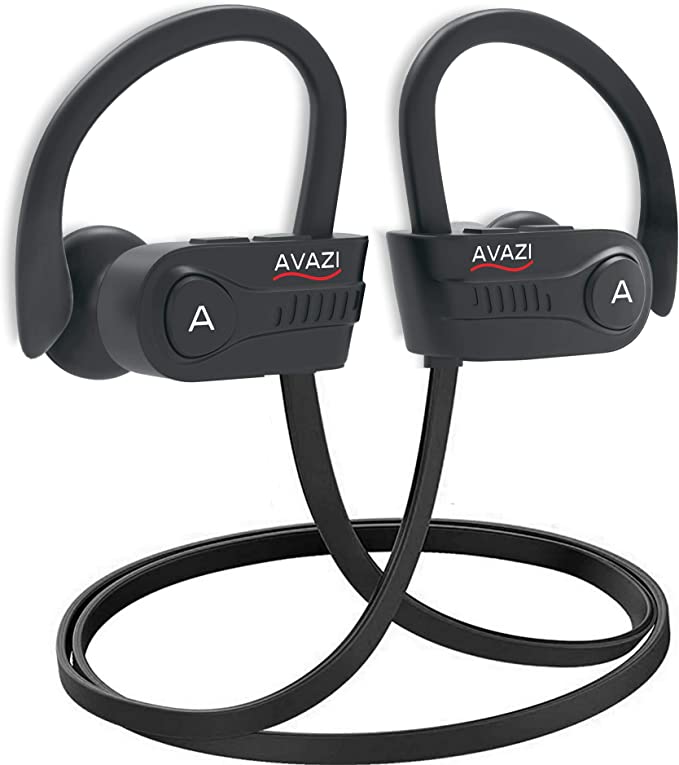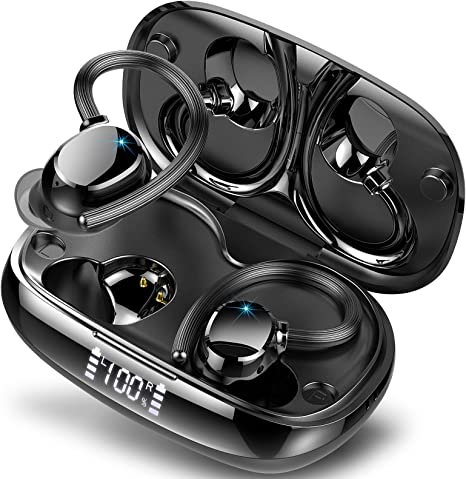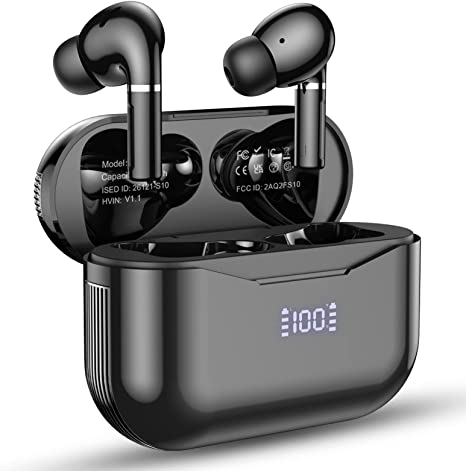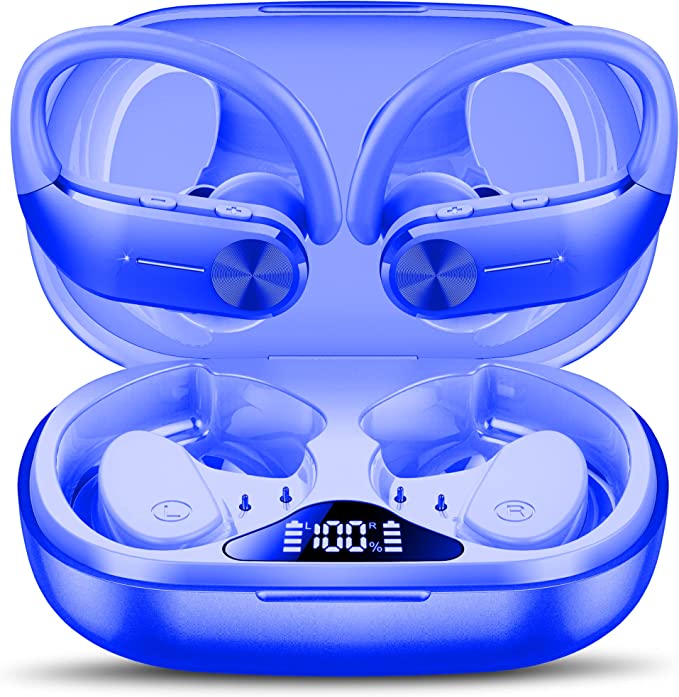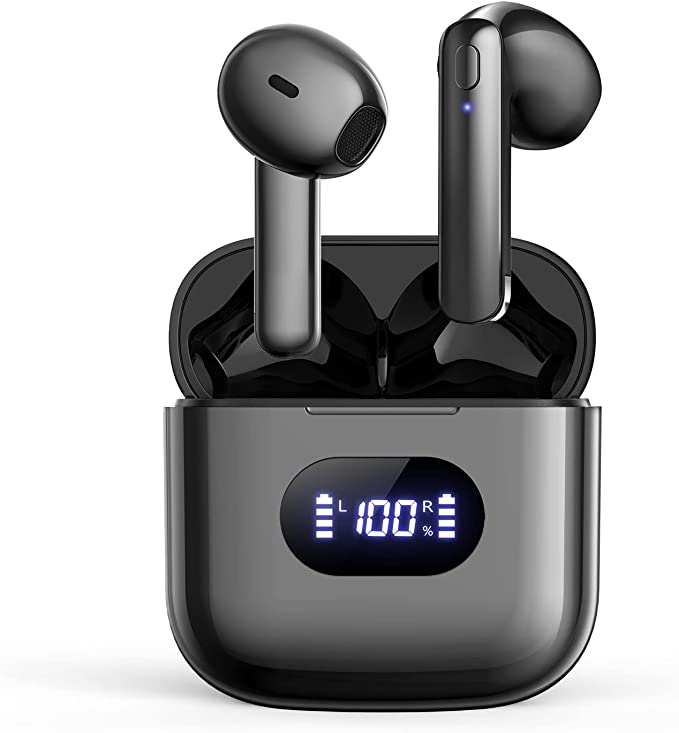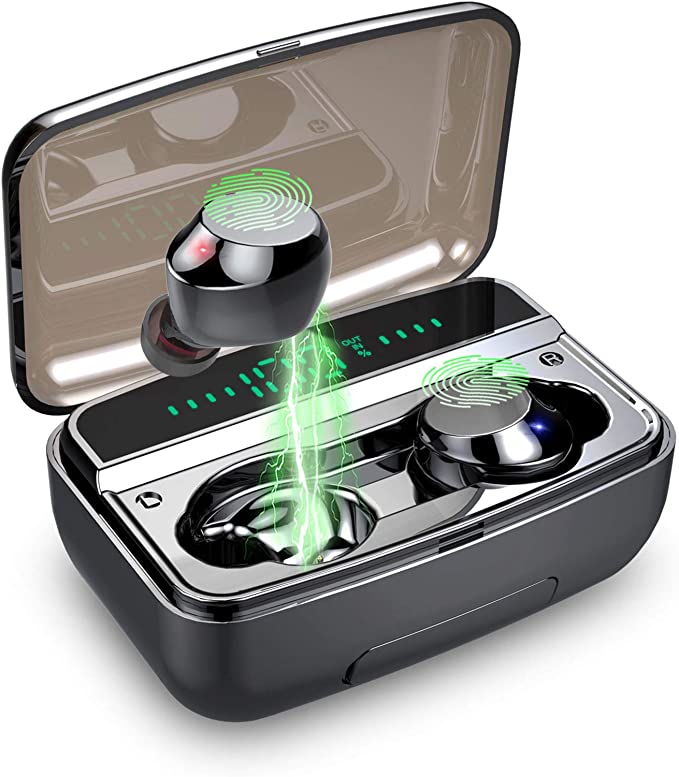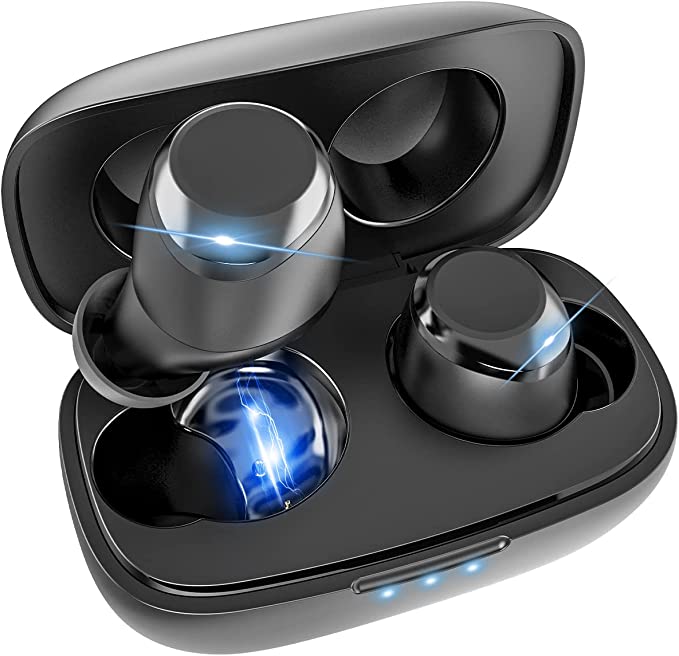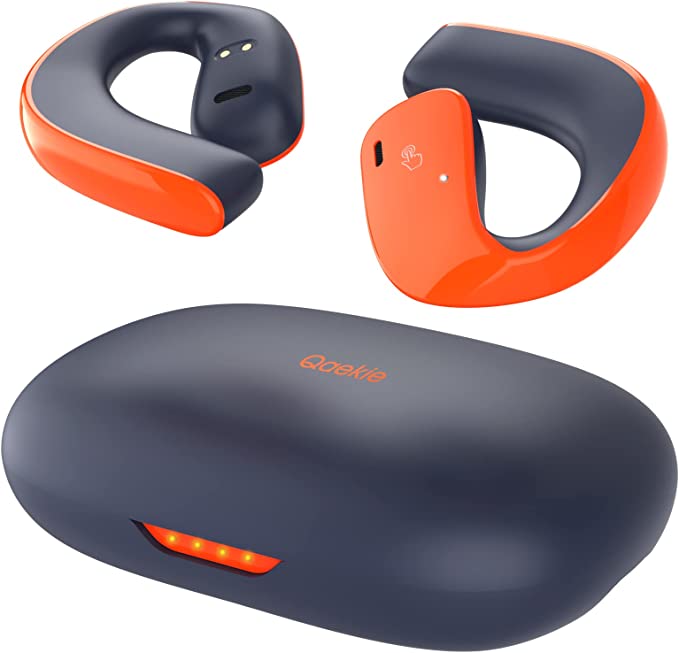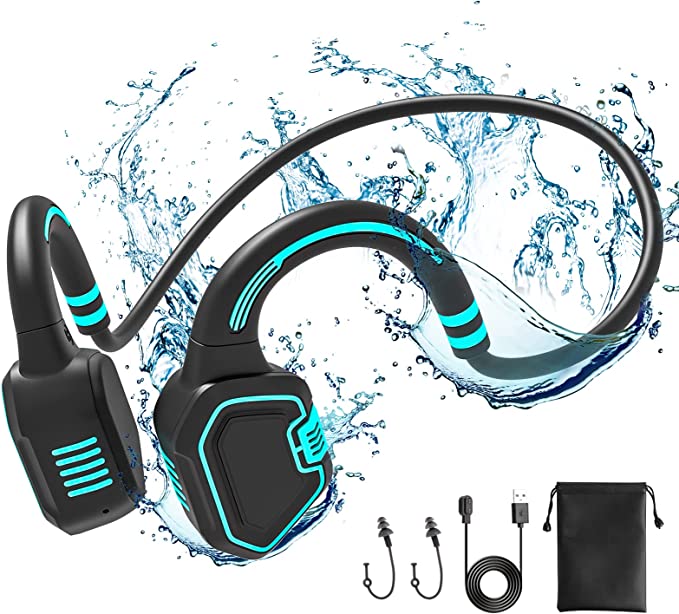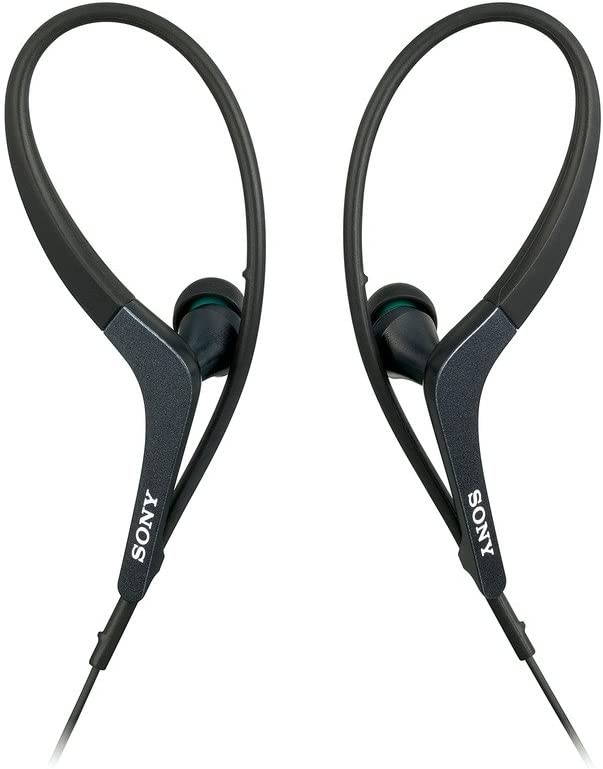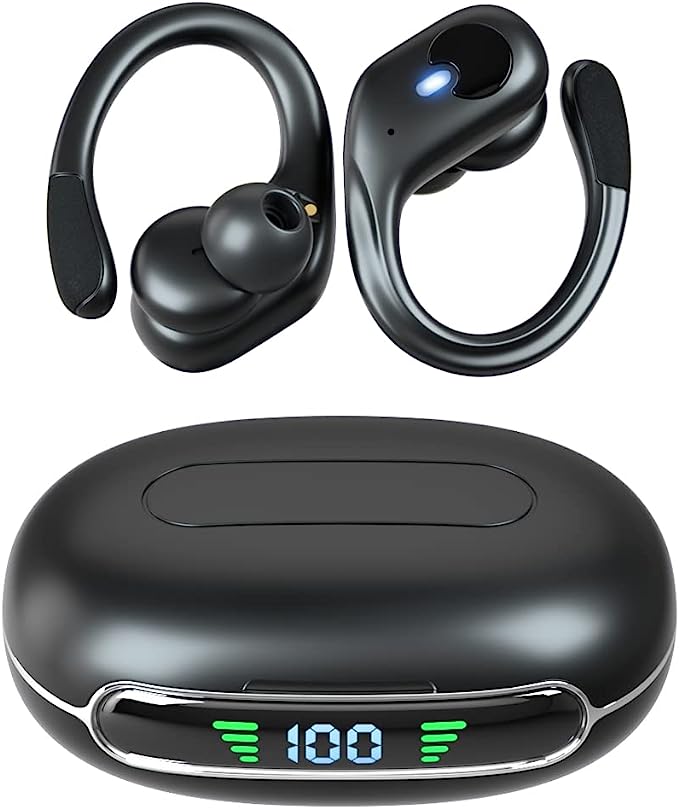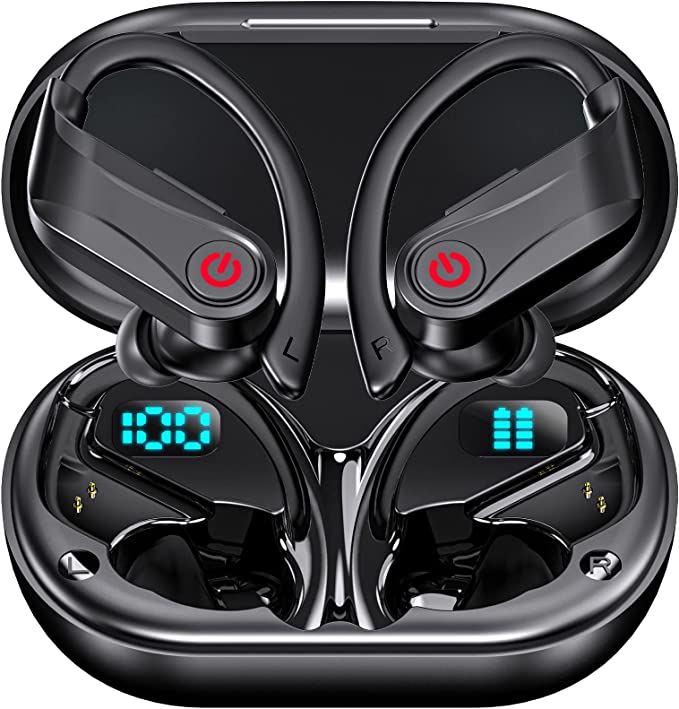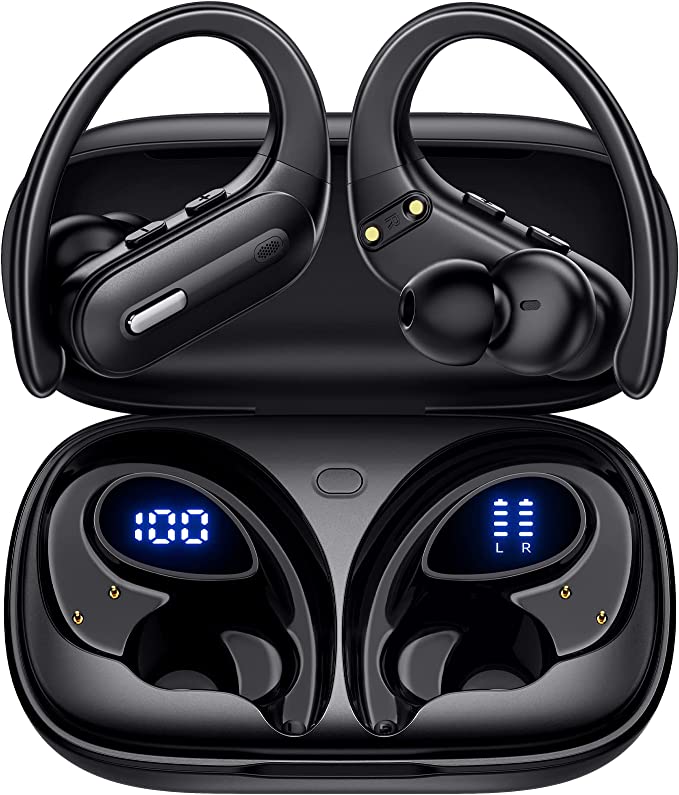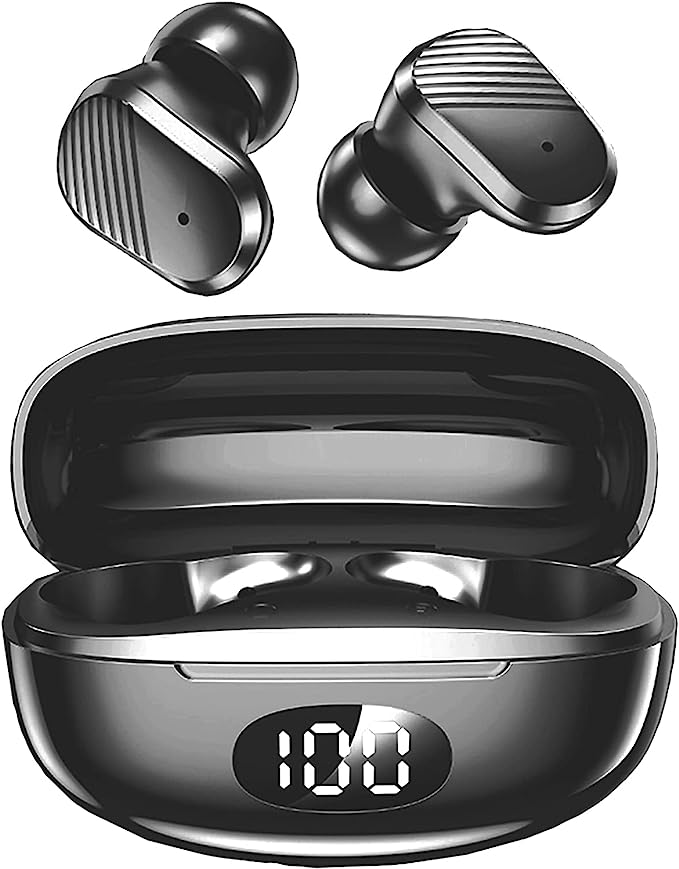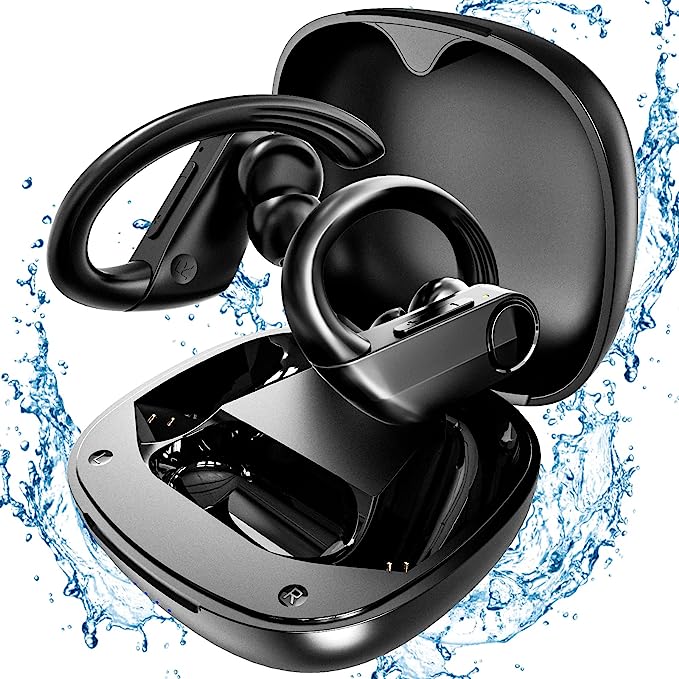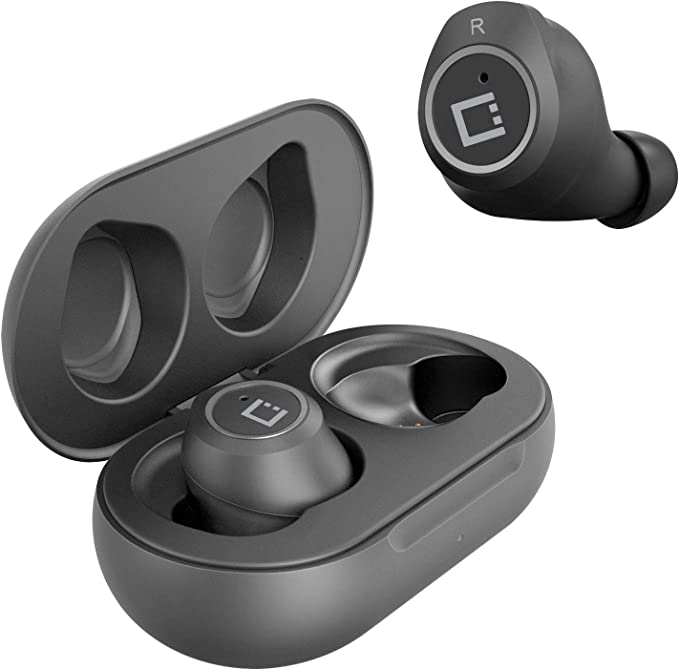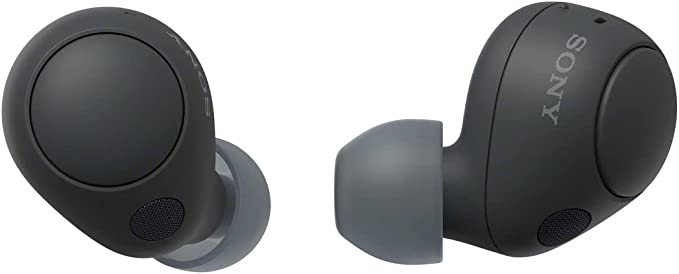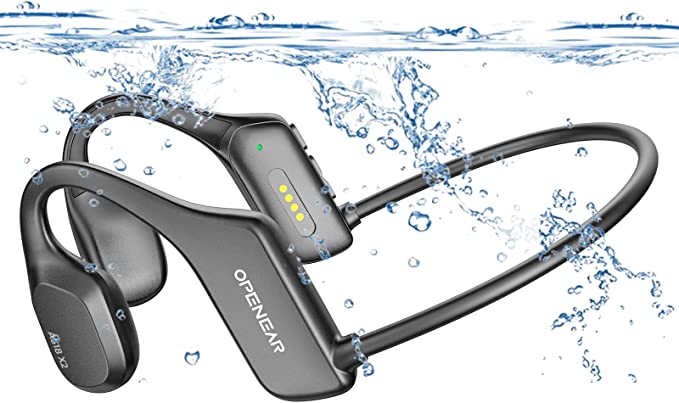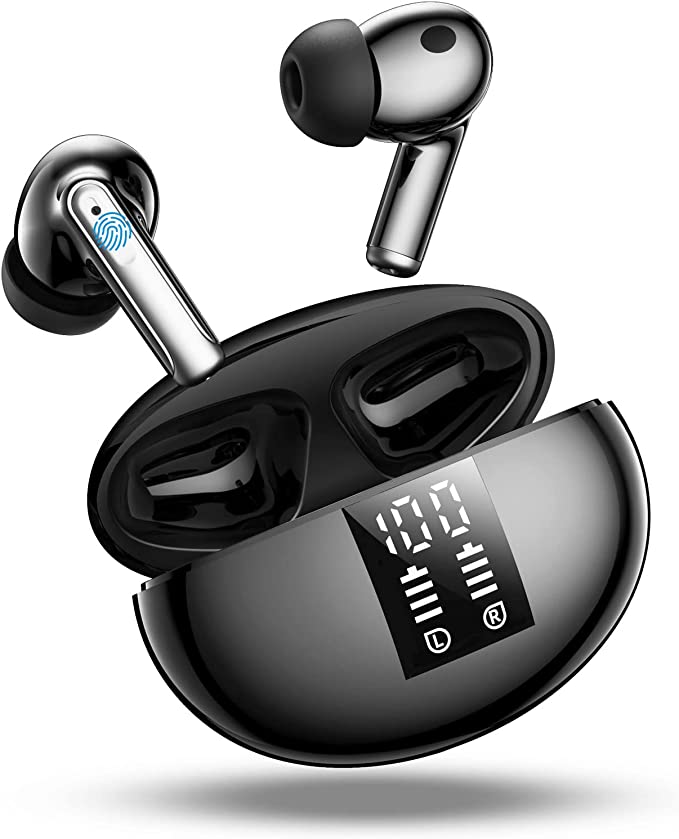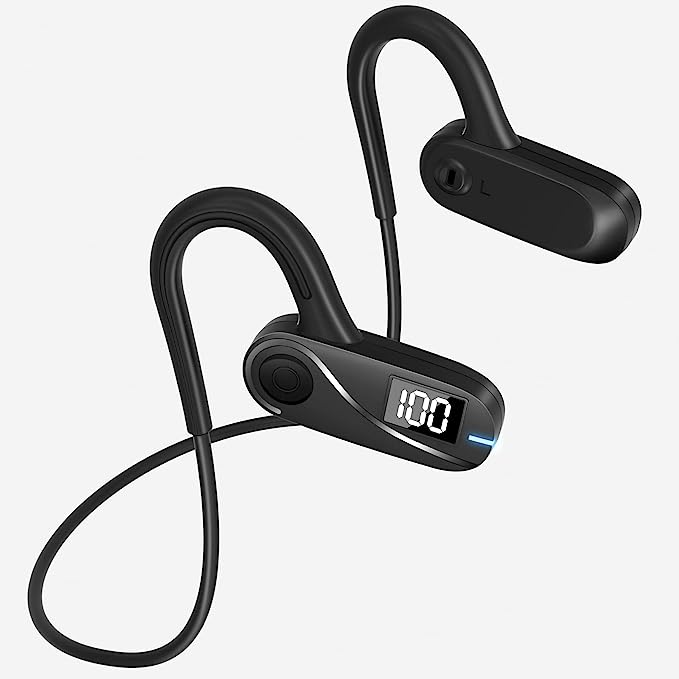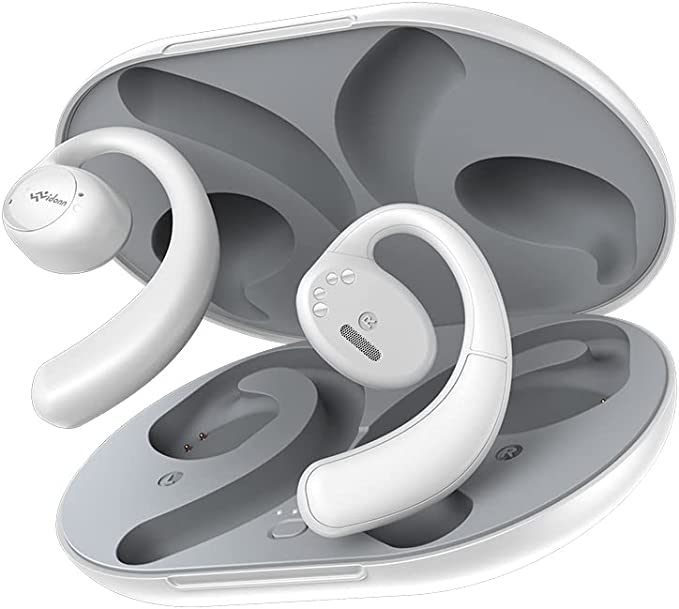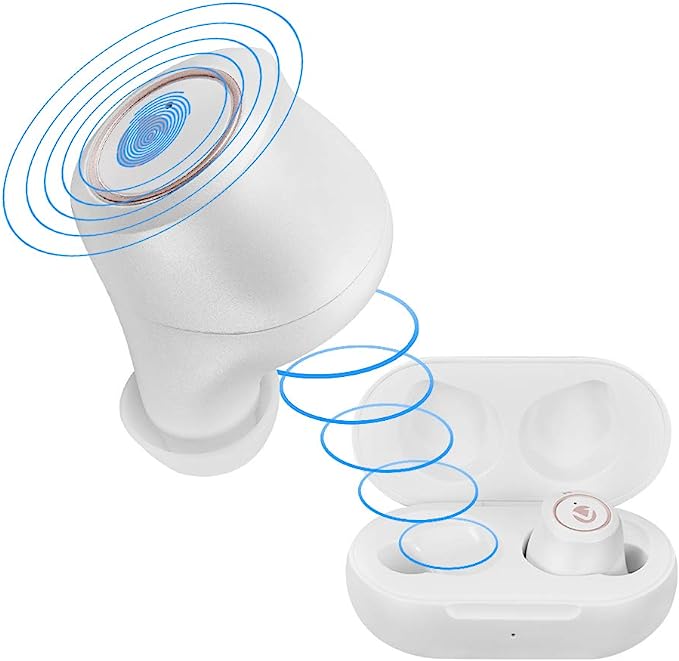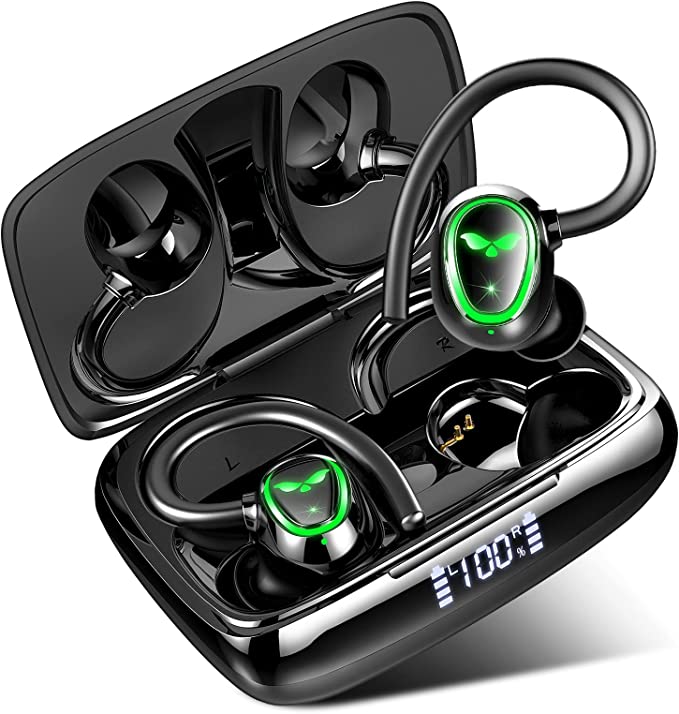RICOO v77 Wireless Earbuds: Dive into Immersive Sound with Advanced Bluetooth 5.3 Technology
Update on May 30, 2025, 12:08 p.m.
The Sound of Science: A Deep Dive into the RICOO v77 Wireless Earbuds
In the grand theatre of life, sound is an invisible yet profoundly influential actor. It scores our most cherished memories, fuels our workouts, cocoons us in focus during hectic days, and connects us across vast distances. For generations, our quest to personalize this auditory world was tethered by wires, a physical leash to our devices. Then came the wireless revolution, a subtle but seismic shift that untangled our listening experiences, offering a newfound freedom. It’s in this landscape of liberated audio that devices like the RICOO v77 Wireless Earbuds emerge, not just as gadgets, but as compact packages of fascinating science and intricate engineering. Let’s embark on an exploration, peering behind the curtain of their features to understand the technology that powers our personal soundtracks.

The Unseen Connection: More Than Just Bluetooth
At the very core of any modern wireless listening experience lies a technology so ubiquitous we often take it for granted: Bluetooth. The RICOO v77 earbuds, according to their product information, come equipped with Bluetooth 5.3, a significant iteration in this wireless standard’s lineage.
Beyond the Buzzword: What Bluetooth 5.3 Really Means for Your Ears
Think of Bluetooth as an invisible, short-range radio handshake, a digital emissary constantly ferrying audio data from your phone or laptop to your ears. Its name, curiously, harks back to Harald “Bluetooth” Gormsson, a 10th-century Danish king famed for uniting disparate Danish tribes. Similarly, Bluetooth technology was conceived in the late 1990s by Ericsson (among others) with the ambition to unite different devices wirelessly, replacing a tangle of proprietary cables.
So, what does version 5.3 bring to your listening party? It’s not just a bigger number; it’s a suite of refinements aimed at a smoother, more robust experience:
* Reduced Latency: Ever watched a video where the actor’s lips move just a fraction of a second before you hear their voice? That frustrating delay is called latency. Bluetooth 5.3 significantly curtails this lag. Through improved channel sounding and more efficient data packet handling, it helps ensure that what you see and what you hear are in near-perfect synchrony. This is a boon for gamers, where a split-second audio cue can be the difference between virtual victory and defeat, and for anyone who enjoys seamless video streaming.
* Enhanced Stability and Range: Previous Bluetooth versions could sometimes be a bit like a temperamental radio signal, prone to dropouts if you moved too far or if there was too much interference. Bluetooth 5.3 strengthens this connection. The RICOO v77 specifications claim a “15 meters barrier-free range,” a testament to these stability improvements, allowing you more freedom to roam without your audio sputtering.
* Improved Power Efficiency: Wireless devices are always in a silent battle against battery drain. Bluetooth 5.3 is a smarter energy consumer. It incorporates features like LE Power Control, which allows devices to dynamically optimize transmission power, and an enhanced “sleep” mode (low-duty cycle operation for secondary advertising channels), meaning the earbuds and your source device sip power more judiciously. This translates directly to longer listening sessions before you need to reach for that charging case – a crucial factor for all-day users.
It’s worth noting that while Bluetooth versions are generally backward compatible (your Bluetooth 5.3 earbuds should work with an older Bluetooth 4.2 phone, for example), you’ll typically only get the full benefits of the newer standard if both connecting devices support it. It’s like having a high-speed internet plan but an old modem; you’re limited by the weakest link in the chain.
The Magic of Instant Pairing: Convenience Engineered
The RICOO v77 product details also highlight “Automatic Pairing.” This seemingly simple convenience is a carefully choreographed dance of protocols. After an initial manual pairing (where your phone and earbuds formally “meet” and exchange security keys), subsequent connections are streamlined. When you take the earbuds out of their charging case, they power on and broadcast their availability. Your phone, remembering its previous acquaintance, quickly re-establishes the connection, often within seconds. This is part of the Bluetooth standard’s design to make wireless audio as effortless as possible. However, as some user feedback for various wireless devices sometimes indicates, this “magic” can occasionally be disrupted by environmental factors or software quirks, leading to the occasional need to re-pair – a reminder that even the most sophisticated wireless tech operates in a complex and sometimes unpredictable radio environment.

Sculpting Your Personal Soundscape: The Auditory Experience
Connecting is just the first step; the true measure of any audio device is, of course, the sound itself. The RICOO v77 earbuds make several claims about their audio prowess, including “3D Stereo,” “Hi-Fi sound quality,” and “deep bass,” alongside a “groundbreaking noise reduction chipset.”
Chasing “Hi-Fi” and “3D Stereo”: A Journey into Sound Perception
Let’s start with “Hi-Fi.” Standing for High Fidelity, this term has a storied history in audio, originally referring to equipment that could reproduce sound with minimal distortion, as faithful as possible to the original recording. In the realm of audiophile-grade stereo systems, “Hi-Fi” implies adherence to stringent performance metrics. When applied to consumer electronics like wireless earbuds, the term is often used more broadly to suggest a higher quality listening experience than basic alternatives. The RICOO v77’s claim of “Hi-Fi sound quality” and “deep bass” points to an ambition to deliver clear, detailed audio with a satisfying low-end response, likely achieved through the design of their internal drivers (the tiny speaker components within each earbud) and acoustic tuning.
Then there’s “3D Stereo” or “3D surround sound.” Our brains are remarkably adept at locating sounds in three-dimensional space, thanks to subtle differences in when and how sound waves reach our two ears (known as interaural time differences and interaural level differences). Psychoacoustics, the study of sound perception, leverages these principles. “3D Stereo” effects in earbuds attempt to simulate this spatial awareness, making music or game audio feel more immersive, as if sounds are originating from different points around your head, not just from two distinct left/right channels. This can be achieved through various digital signal processing (DSP) techniques. While the immersive effect can be quite engaging, its convincingness often depends on the quality of the audio processing and the source material itself.
The Quest for Quiet: Understanding Noise Cancellation
In our increasingly noisy world, the ability to carve out a pocket of tranquility is highly prized. The RICOO v77 earbuds are described as featuring a “unique noise reduction function” powered by a “groundbreaking noise reduction chipset.” This points towards Active Noise Cancellation (ANC) technology.
But how does ANC work its quiet magic? It’s a fascinating feat of acoustic engineering:
1. Listen: Tiny microphones embedded on the outside of the earbuds constantly sample the ambient sounds around you – the drone of an airplane engine, the hum of an office air conditioner, the chatter of a busy café.
2. Analyze & Invert: The “noise reduction chipset” (a specialized processor) instantly analyzes these incoming sound waves and generates a new, precisely opposite sound wave – an “anti-noise.” Think of it like this: if the incoming noise is a wave peaking upwards (+1), the anti-noise is a wave dipping downwards (-1).
3. Cancel: This anti-noise is then played through the earbud’s speakers. When the original noise wave and the anti-noise wave meet at your eardrum, they effectively cancel each other out, much like adding +1 and -1 results in zero.
There’s also passive noise cancellation (or noise isolation), which is simply the physical act of the earbuds sealing your ear canal and blocking out some external sound, like earplugs. Most in-ear earbuds provide some degree of this. ANC, however, is an active electronic process.
It’s important to understand that ANC is typically most effective against constant, low-frequency sounds (like engine rumbles or fan hums) and less so against sudden, sharp noises (like a door slamming or a nearby conversation). The actual perceived effectiveness of ANC can also depend on various factors: the quality of the microphones, the speed and accuracy of the processing chip, the fit of the earbuds in your ears (a good seal is crucial for both passive isolation and optimal ANC), and the specific frequencies of the ambient noise. The product information for the RICOO v77 notes “the unique noise reduction function will allow you to enjoy music without interference,” while some user reviews reflect varied experiences with its noise-canceling capabilities, with one user stating “not really noise canceling” and another “Does not noise cancel.” This highlights that ANC performance is complex and can be subjective.
Being Heard: The Science Behind Clearer Calls with Dual Mics
In an age of remote work and constant connectivity, earbuds are often our primary tools for phone calls and virtual meetings. The RICOO v77 product details mention “Dual Microphones.” Equipping earbuds with multiple microphones allows for advanced techniques to improve call clarity. One common method is beamforming, where the signals from the two (or more) microphones are processed to preferentially capture sound coming from the direction of the user’s mouth, while simultaneously attempting to suppress sounds from other directions (i.e., background noise). This can result in your voice sounding clearer and more prominent to the person on the other end, even if you’re in a less-than-ideal acoustic environment. One user review noted, “microphone works great,” suggesting that, for some at least, this feature performs well. However, like ANC, microphone performance can also be influenced by the surrounding environment and the specific algorithms used.

Built for Your World: Durability and Comfort by Design
Our gadgets need to keep pace with our lives, whether that involves a sweaty gym session, a dash through an unexpected downpour, or simply hours of comfortable listening.
Decoding IPX7: What It Takes to Brave the Elements
The RICOO v77 earbuds are advertised with an IPX7 waterproof rating. This isn’t just a marketing term; it’s a specific standard defined by the International Electrotechnical Commission (IEC) under standard 60529. Let’s break it down:
* IP: Stands for “Ingress Protection.”
* X: The ‘X’ in IPX7 means the product hasn’t been specifically rated for protection against solid particle ingress (like dust). This is common for earbuds, where water resistance is often the primary concern.
* 7: This is the crucial digit for water protection. A ‘7’ rating signifies that the device can withstand being submerged in water up to 1 meter deep for a maximum of 30 minutes without harmful ingress of water. The test is typically conducted under controlled laboratory conditions.
What does this mean for you as a user of the RICOO v77? It means you can likely wear them during vigorous workouts without worrying about sweat damaging the internal components. If you get caught in a rain shower, they should also be fine. However, it’s critical to understand the limitations. IPX7 does not mean they are designed for swimming. Prolonged submersion, exposure to water jets, or submersion deeper than 1 meter can still lead to damage. Also, the rating typically applies to fresh water; saltwater or water with chemicals (like chlorine in a pool) can be more corrosive. Think of IPX7 as a robust shield against everyday moisture encounters, not an invitation for aquatic adventures.
The Ergonomic Equation: Finding the Sweet Spot for Your Ears
If an earbud isn’t comfortable, even the most stellar sound quality or advanced features become moot for long-term use. The RICOO v77 product information highlights an “ergonomic design” and a “45-degree inclination.” Ergonomics in earbud design is the science of crafting a shape that conforms as closely as possible to the complex contours of the human ear, specifically the concha (the outer bowl-like part) and the ear canal.
The “45-degree inclination” likely refers to the angle of the nozzle – the part that extends into your ear canal. This angling is often designed to follow the natural curve of the ear canal, aiming for a more secure and less intrusive fit. The goal is to distribute pressure evenly, minimize irritation, and ensure the earbuds stay put, even during movement. The lightweight nature of the RICOO v77 earbuds, with a single earbud weighing a mere 0.015lb (approximately 6.8 grams) according to the product description, also plays a significant role in long-wear comfort. However, human ears are incredibly diverse in shape and size. While ergonomic designs aim to cater to the majority, the “perfect fit” remains a somewhat subjective experience. What feels snug and comfortable for one person might be slightly off for another.

The Power to Play On: Understanding Battery Life
A wireless device is only as good as its battery. The RICOO v77 specifications paint a picture of decent endurance.
The Marathon Runner: How RICOO v77 Keeps the Music Going
The earbuds themselves are stated to offer “up to 5 hours” of continuous music playback on a single charge. This is a fairly standard figure for many true wireless earbuds in this category. The real “marathon runner” aspect comes from the mini portable charging case. This case isn’t just for storage; it’s a pocket-sized power bank specifically for the earbuds. The product information indicates the case has a 300mAh capacity and can provide “6 times the full charge of the earbuds.” If each earbud charge yields 5 hours, then 6 additional charges would theoretically provide another 30 hours, bringing the total potential listening time to around 35 hours before the case itself needs to be plugged in.
The longevity of these tiny power cells relies on lithium-ion (or lithium-polymer) battery technology, which offers a good balance of energy density and relatively light weight, making it ideal for small wearable devices. Of course, actual playback time can vary based on factors like listening volume (louder volumes consume more power), the type of audio content, and even ambient temperature.
Quick Boost: The “15 mins for 10 hours” Clarified
The product description further adds an intriguing claim: “charging 15 minutes for the box, you can use 10Hrs.” This most likely refers to a quick charge capability for the charging case itself. A 15-minute charge to the case could replenish its own battery enough to subsequently provide approximately 10 hours of total potential earbud playtime. It’s less likely to mean 10 hours of earbud use from a 15-minute earbud charge directly from the case, as that would be an exceptionally high quick-charge ratio for the earbuds themselves. This feature is handy if you find your case depleted and need to quickly get enough power back into it to recharge your earbuds for a few more hours of use.
Interacting with Your Audio: Controls and Usability
Beyond sound and stamina, how you interact with your earbuds is key to the daily experience.
The Touchy Subject of Touch Controls
The RICOO v77 earbuds feature “multi-function button control,” which, in modern earbud design, typically translates to touch-sensitive surfaces on the exterior of each earbud. These allow for a sleek, button-free aesthetic. A series of taps or long presses can manage functions like play/pause, skipping tracks, adjusting volume (though one user question indicated uncertainty about this, suggesting it might primarily be phone-controlled), answering/rejecting calls, and activating your smartphone’s voice assistant (Siri or Google Assistant).
The elegance of touch controls, however, can sometimes be a double-edged sword. Their sensitivity, while enabling quick actions, can also lead to accidental triggers. As noted in some of the user feedback from the provided information (“everytime I simply wanted to reposition the buds in the ear, I triggered some function,” and “Everytime I touch it…it drops the call”). This is a common challenge in the design of compact touch interfaces. Achieving the right balance between responsiveness and resistance to unintentional activation is a delicate art. It often takes users a little time to get accustomed to the specific touch gestures and sensitivity of their particular earbuds.
Conclusion: Beyond the Earbuds – The Evolving Symphony of Tech and Life
The RICOO v77 Wireless Earbuds, as detailed in their product information, serve as a fascinating microcosm of the broader trends in personal audio technology. They encapsulate the ongoing drive towards greater wireless freedom through advancements like Bluetooth 5.3, the pursuit of more immersive and controllable soundscapes, the necessity of robust real-world usability with features like IPX7 waterproofing, and the constant push for extended battery life in compact forms.
Understanding the science and engineering that underpin these features – from the radio waves of Bluetooth to the acoustic principles of noise cancellation and the material science of waterproofing – doesn’t just demystify our gadgets; it enriches our appreciation for them. It empowers us to be more informed consumers and more engaged users of the technology that increasingly shapes our daily sensory experiences.
While no single product represents the final word in a field evolving as rapidly as personal audio, the journey of devices like the RICOO v77 reflects a larger human endeavor: to harness the power of science to create tools that enhance our connection to a world efeito of sound, and to each other. As we move forward, the symphony of technology and life will undoubtedly continue to produce even more remarkable ways to listen, learn, and connect.
